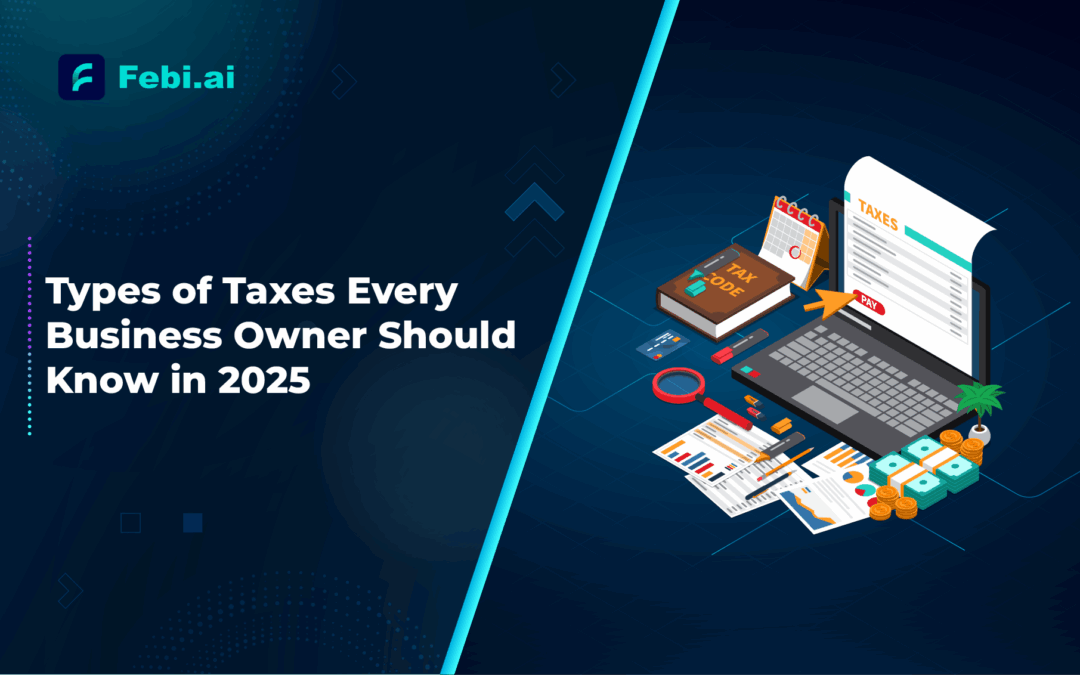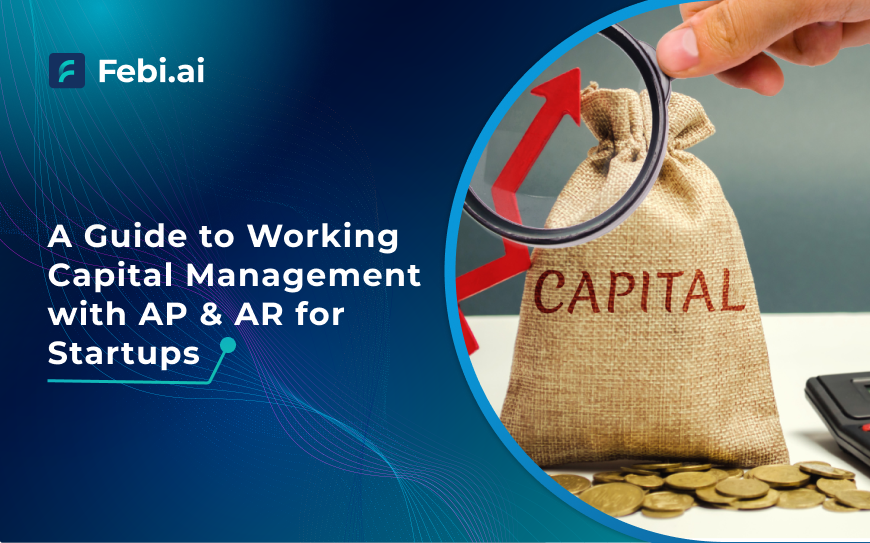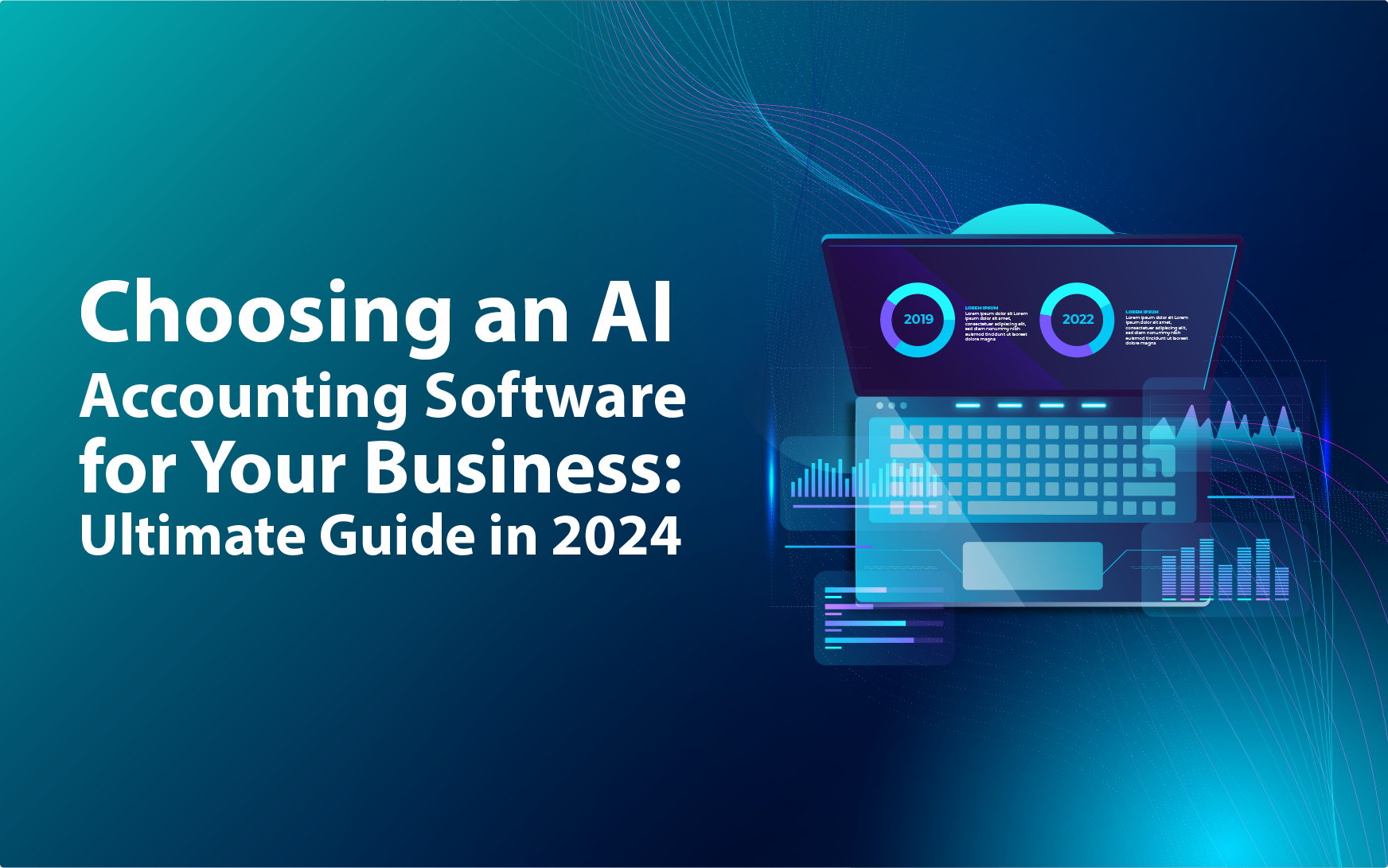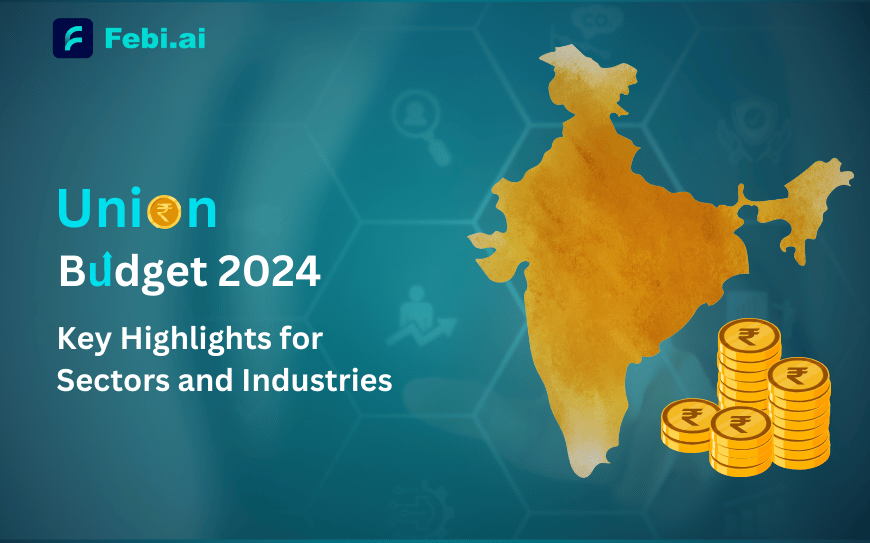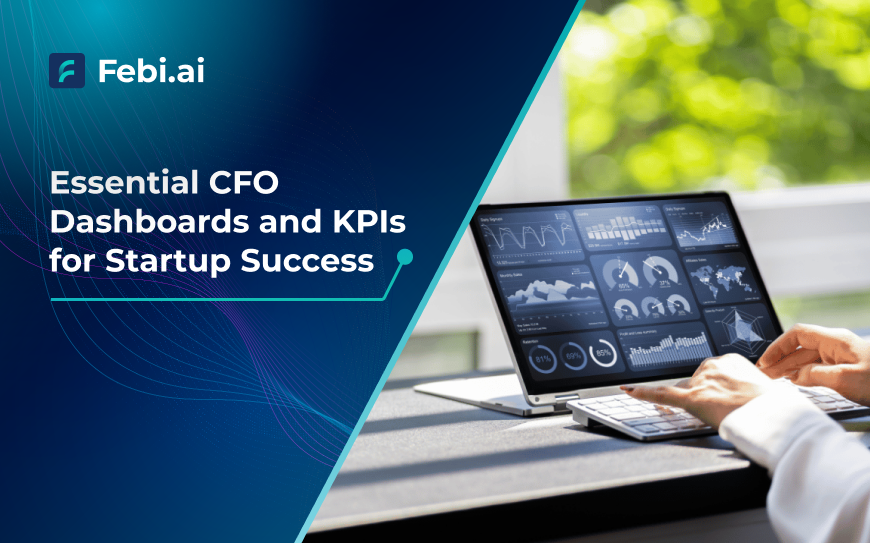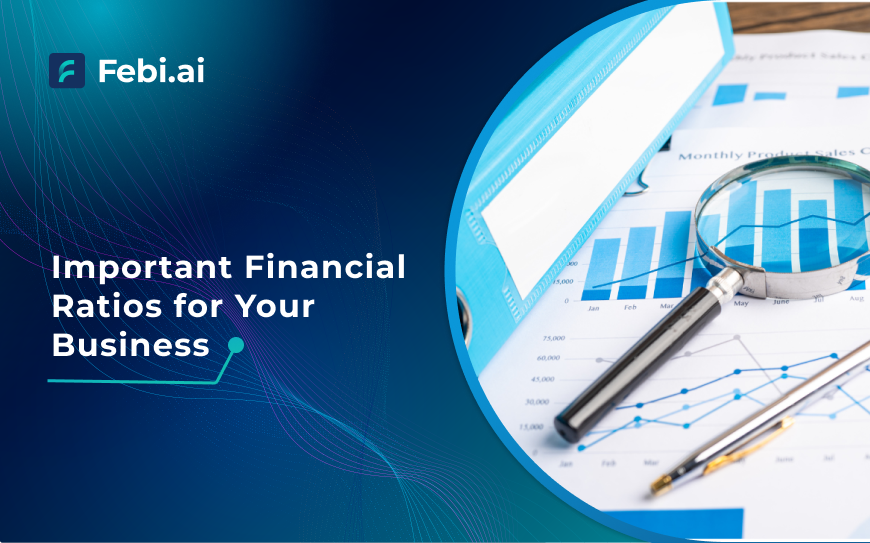Table of Contents
Taxes – ugh, right? But hear me out. Understanding how taxes work in India isn’t just a box to tick on your compliance checklist. It can seriously shape how your business grows, what decisions you make, and how confidently you face investors or regulators. Still, let’s be honest – India’s tax ecosystem! It’s dense, complicated, and let’s not sugarcoat it – it’s pretty stressful too.
That’s why this breakdown exists. To explain tax accounting without the jargon, simplify compliance in tax matters, and give you the essentials on what taxes business owners must pay. So you can stay focused on building something that lasts.
1. Why Entrepreneurs Can’t Afford to Wing It with Taxes
Whether you’re hustling as a freelancer or steering a full-blown SME, ignoring tax stuff isn’t just risky – it’s expensive. Staying compliant in tax isn’t just about filing a GST return form at year-end.
It’s about:
- Keeping your financials real and up-to-date
- Making timely payments (without last-minute panic)
- Rolling with changes in tax laws without missing a beat
- And yeah, keeping every receipt because tax notices never come with a warning
- Once you’re dialed in on the basics, you’ll feel –
- More clarity, less guesswork
- Audits stop feeling like courtroom drama
- Smarter calls on expenses, savings, and reinvestments
- You’ll even spot legit ways to lower your liability
2. India’s Tax Structure – Demystified
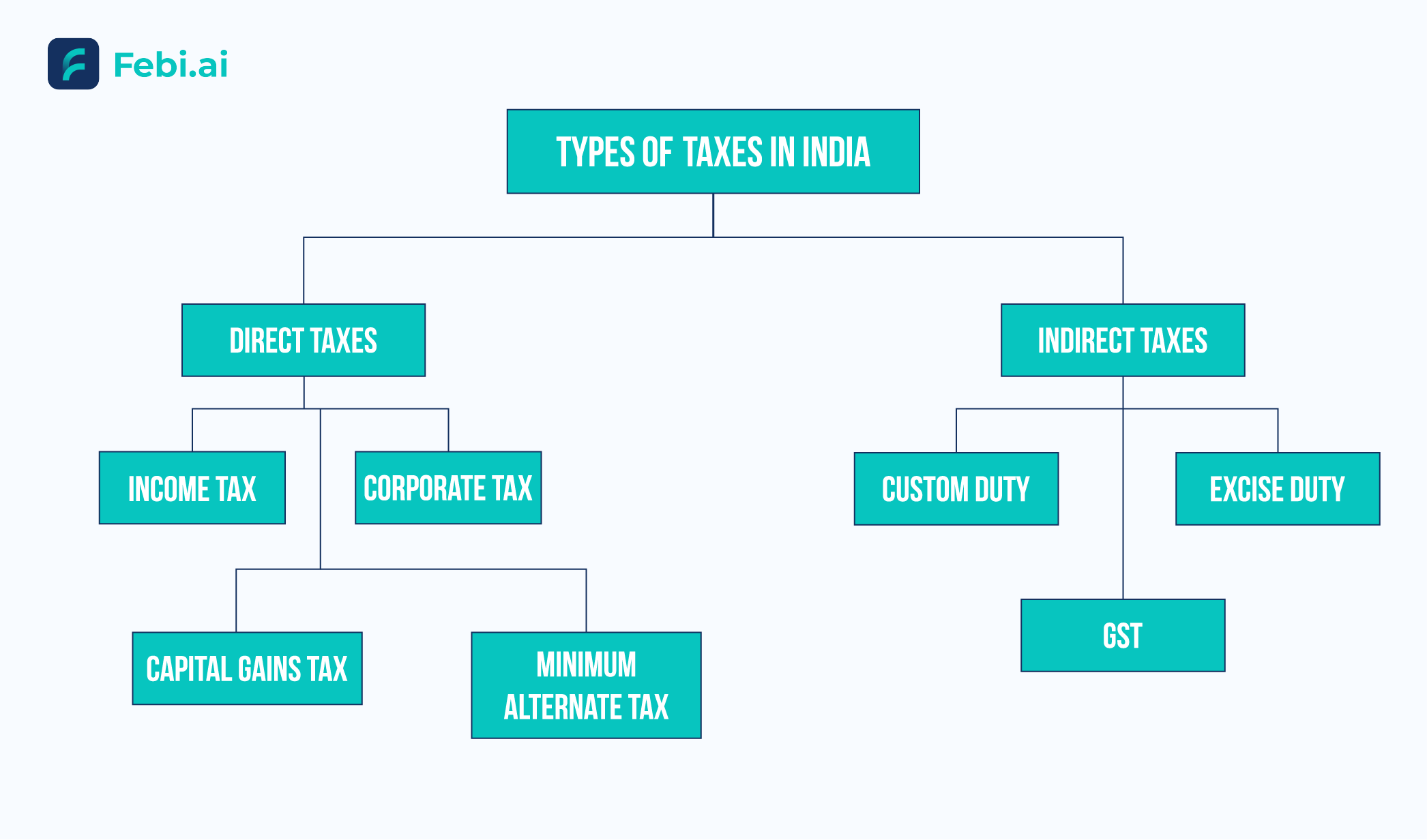
Okay, zooming out for a second, India works on a dual taxation system.
- Direct Taxes: You pay these taxes straight to the government. Like income tax, corporate tax.
- Indirect Taxes: These taxes are collected by government through transactions. GST is the biggie here.
Both central and state governments have skin in the game, and depending on what you sell and where you’re based, the rules can shift.
We get it – terms like CGST, MAT, and HSN can feel like alphabet soup. So let’s cut through it all. Step by step.
3. Direct Taxes: Taxes You Pay Based on Profits or Income
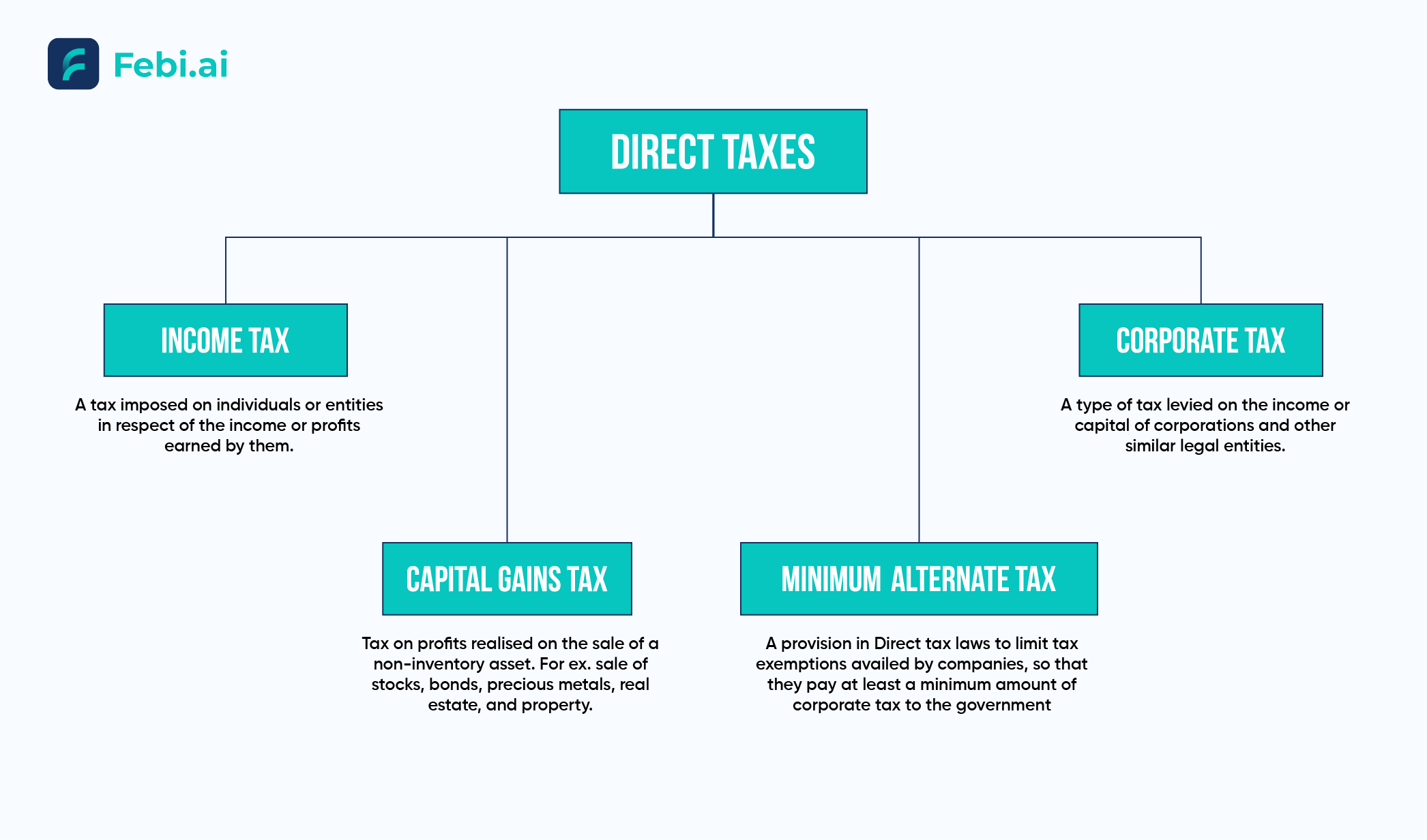
3.1 Income Tax
Got profits? Then yep, you’re on the hook for income tax. If you’re a sole proprietor or freelancer, your personal income and business income are kinda the same thing.
FY 2025–26 – New Tax Regime Slabs:
- If your income is till ₹3 Lakhs you don’t have to pay any taxes.
- If your income is from ₹3 Lakhs to ₹6 Lakhs you must pay 5% of your income as tax.
- If your income is from ₹6 Lakhs to ₹9 Lakhs you must pay 10% of your income as tax.
- If your income is from ₹9 Lakhs to ₹12 Lakhs you must pay 15% of your income as tax.
- If your income is from ₹12 Lakhs to ₹15 Lakhs you must pay 20% of your income as tax.
- If your income is more than ₹15 Lakhs you must pay 30% of your income as tax.
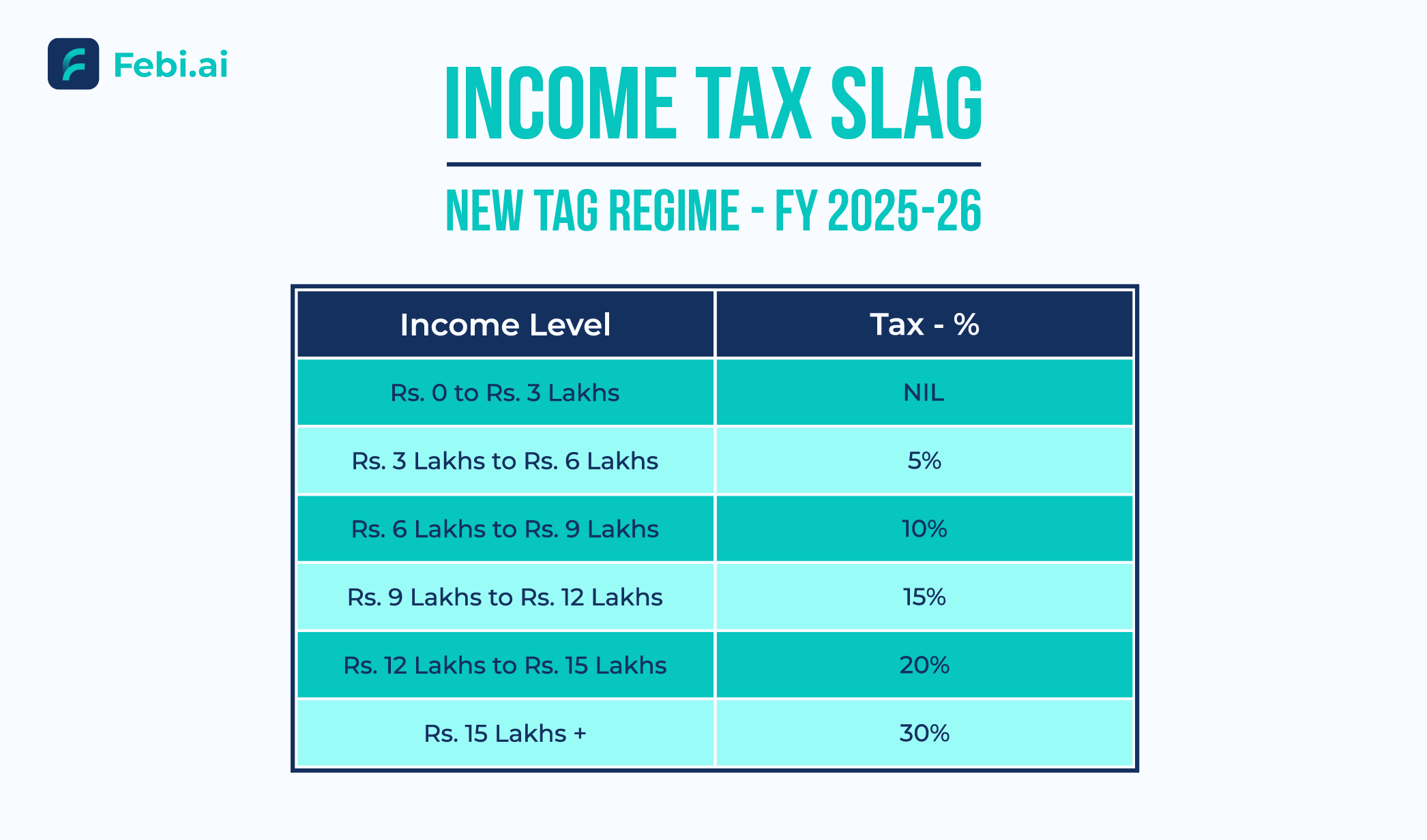
Old vs. new regime? That depends on how many deductions you’re claiming. If it feels messy, call up your CA – or use a solid AI tax tool like Febi.ai.
3.2 Corporate Tax
This one hits registered companies – Pvt. Ltd. firms, LLPs, and Public Ltd. Companies.
Rates – FY 2025-26:
- 22% → Normal companies (no exemptions)
- 15% → New manufacturing firms
- 30% → Under special tax provisions
- 40% → Foreign entities
Filing late or misreporting? That’s a compliance nightmare you don’t need.
3.3 MAT – Minimum Alternate Tax
Here’s the loophole plugger. Some companies claim a bunch of deductions and end up paying zero. MAT kicks in to say, “Hey, pay something.”
- 15% of book profits + surcharge + Cess
3.4 Capital Gains Tax
Sell something at a profit? Property, shares, machinery – it counts.
- Short Term Capital Gains: 15%
- Long Term Capital Gains: 10% beyond ₹1 lakh (equity) or 20% with indexation for other assets
Plan ahead – these sneaks up on a lot of business owners.
4. Indirect Taxes: The Ones Hidden in Transactions
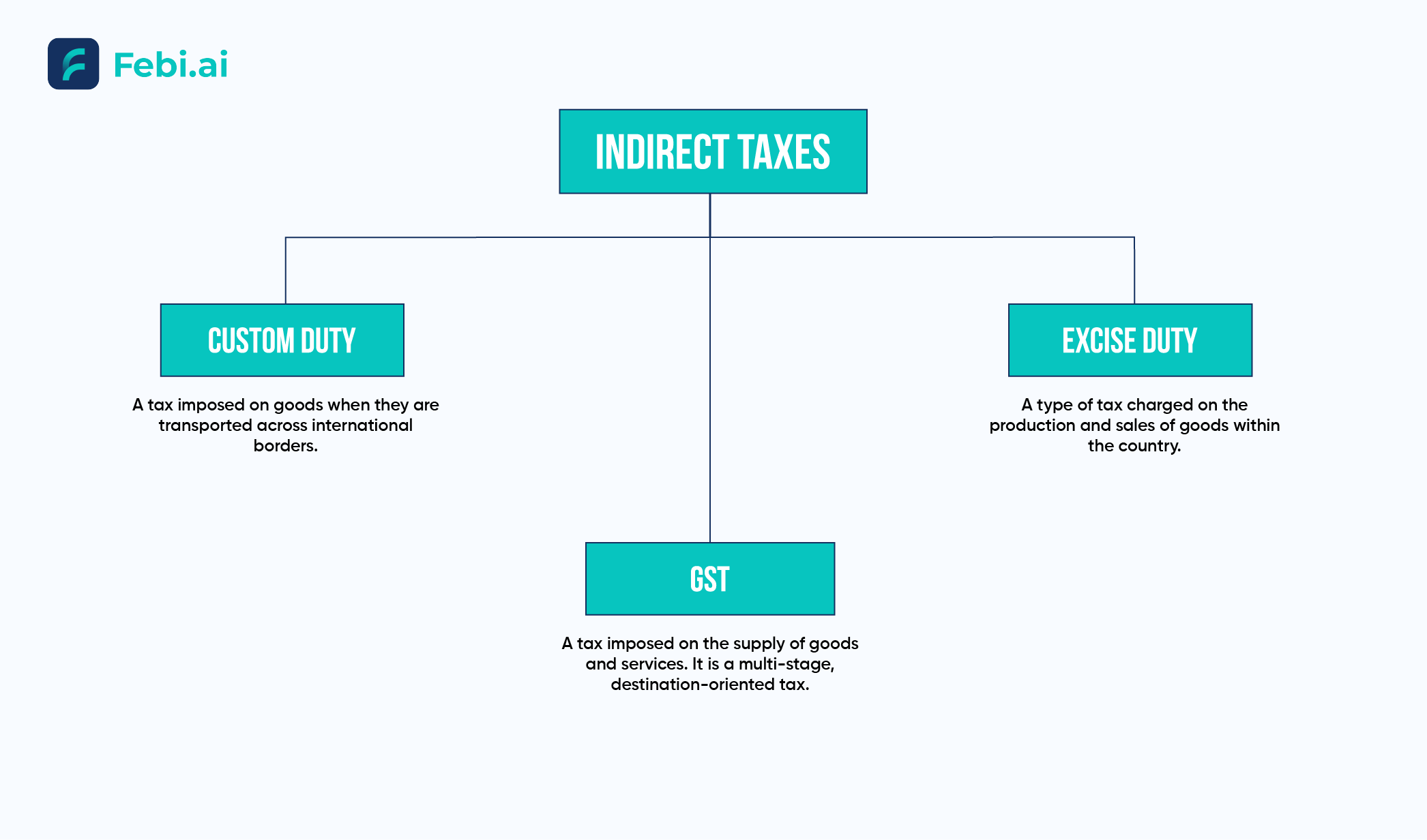
4.1 GST – Goods & Services Tax
GST replaced a tangled web of older taxes. Now, it’s the backbone of India’s indirect tax setup.
When do you register?
- ₹40L+ turnover for goods
- ₹20L+ turnover for services
Slabs: 0%, 5%, 12%, 18%, 28%
Types:
- CGST (Central)
- SGST (State)
- IGST (Interstate & imports/exports)
Compliance here means:
- Filing GSTR-1, GSTR-3B
- Yearly return
- Reconciling invoices

Letting automation handle it? One of the smartest business moves. Febi.ai gives full support in keeping your business tax compliant. whammy
4.2 Customs Duty
Importing or exporting goods? Customs duty’s waiting for you. The rate depends on:
- Product category
- Trade deals in play
- Country of origin
Forget paperwork and things stall – clear documentation is key.
4.3 Excise Duty
Mostly absorbed into GST, but still sticks around for:
- Alcohol
- Fuel
- Tobacco
So, if that’s your line of work, stay alert.
5. The “Oh Right, That Too” Taxes
5.1 Professional Tax
Levy by state governments. Applies to:
- Salaried employees
- Freelancers and professionals
- Maharashtra: ₹200/month
- West Bengal: Up to ₹2,500/year
Example rates:
Employers must deduct and pay it in regularly, failing to do it will result in fines.
5.2 TDS – Tax Deducted at Source
Whenever you pay salaries, rent, contractor fees, etc., a slice goes to the government directly.
Rates vary from 1% to 10% based on transaction type.
Miss a TDS? That’s a double whammy – your expense could be disallowed, plus you’ll owe penalties.
5.3 Equalisation Levy
Targeted at foreign digital service providers – like Google or Facebook Ads.
- 6% on digital ads
- 2% on e-commerce platforms
India’s way of making sure global giants contribute their fair share.
6. Common (but costly) Tax Slip-Ups
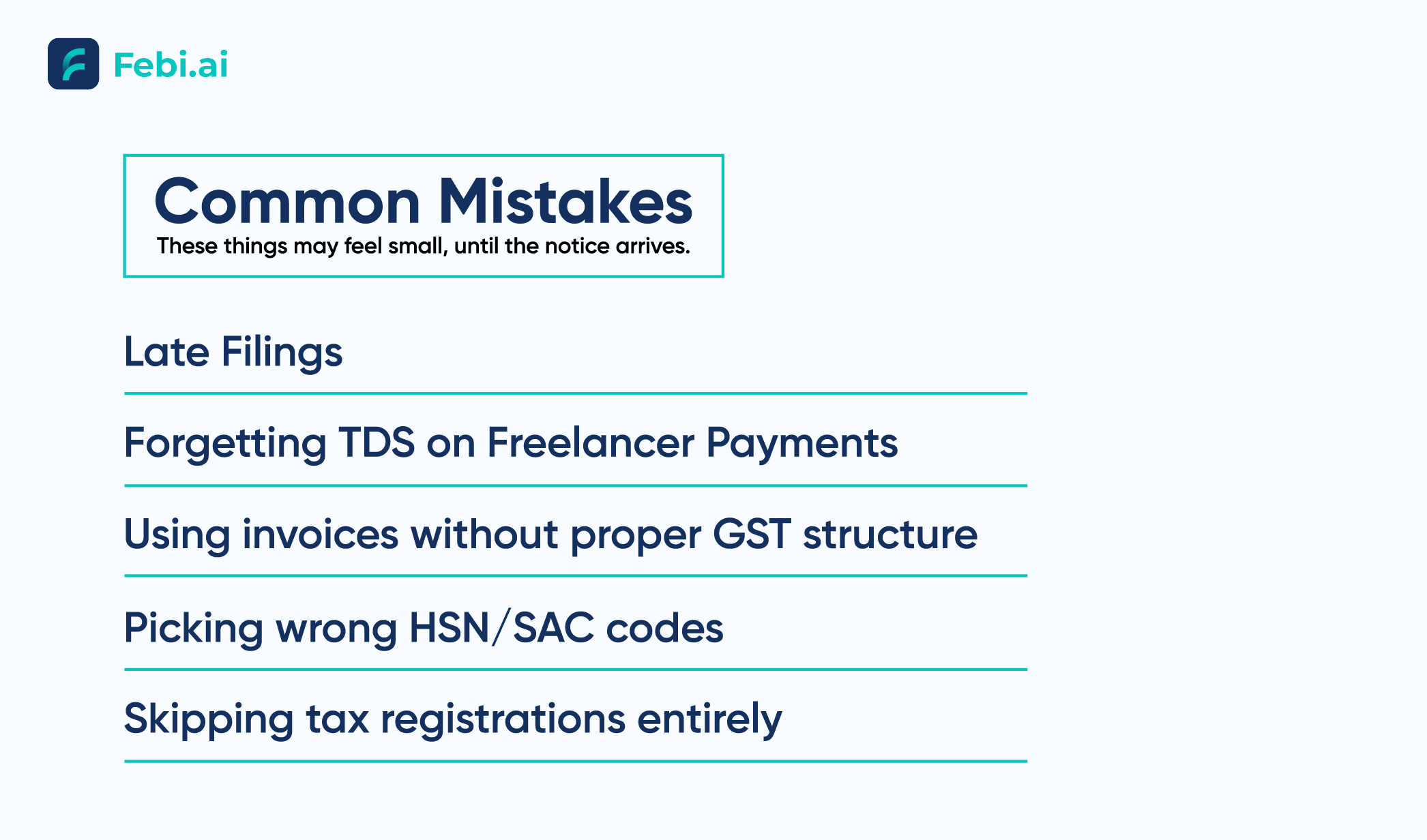
You’re not alone, most businesses mess up here:
- Late filings
- Forgetting TDS on freelancer payments
- Using invoices without proper GST structure
- Picking wrong HSN/SAC codes
- Skipping tax registrations entirely
These things may feel small, until the notice arrives.
7. Stay Tax-Compliant Without Losing Sleep
How can you stay Tax-Compliant?
- Use cloud accounting tools – Auto-track TDS, GST, deductions
- Get a tax expert or AI like Febi.ai – You handle your biz, let it handle filings
- Do quarterly tax reviews – Catch issues early, not after an audit
- Avoid big cash deals – Nothing screams “red flag” like stacks of cash
- Keep your records over years – Especially stuff like capital purchases and GST filings
8. Final Thoughts: Make Taxes Your Business Ally
Think of taxes as receipts for your growth. They mean you’re earning, hiring, scaling. They also mean you’re being watched – so be smart.
From GST and TDS to income tax and capital gains, all of it shapes how reliable your business looks to the outside world.
Too much to juggle manually? That’s why tools like Febi.ai exists to help you automate tax compliance, file returns on time, and sleep easier.
In the end, taxes business owners must pay aren’t the enemy – they’re a signal you’re playing the real game.
